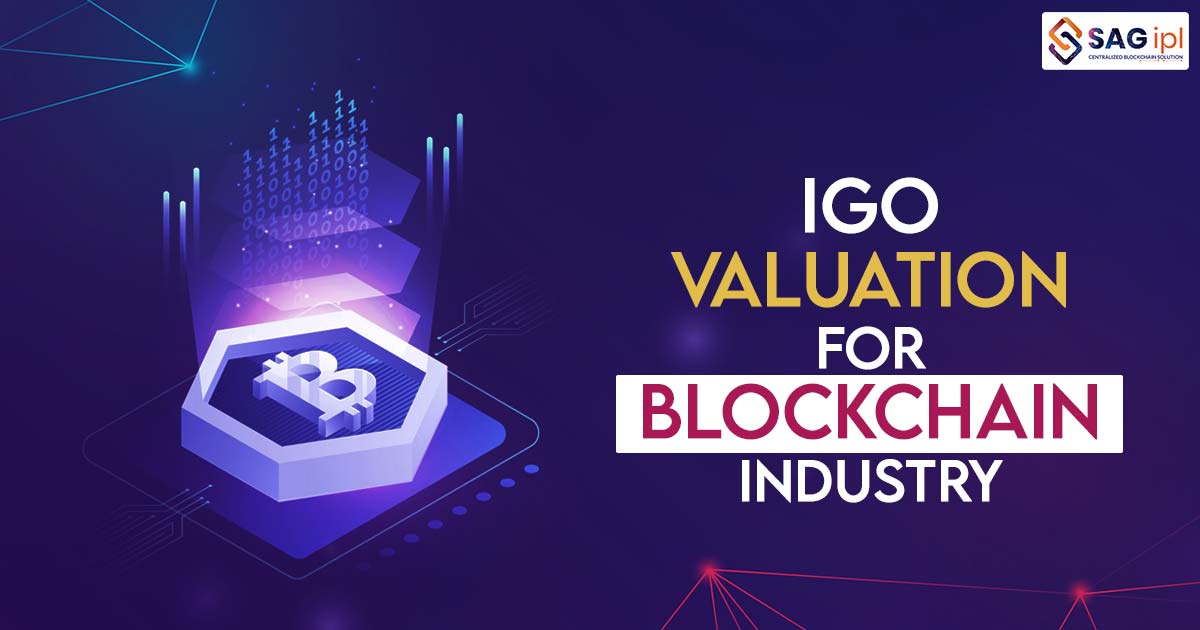IGO (Initial Game Offering) Valuation for Blockchain Industry

An Initial Game Offering (IGO) is a new way of combining crowdfunding and gaming. It allows gamers to access new game projects before they are released while providing developers with extra funding. As gaming enters the blockchain space, IGOs are becoming more relevant. This article will explain what an IGO is, how it works, how it differs from an ICO, how it relates to GameFi and NFTs, and what are the key concepts to understand IGOs.
Define Initial Game Offering (IGO)
An IGO is a form of crowdfunding for gaming projects that are not yet finished. You can buy tokens from a game developer before they launch their first game, hoping that the game will be a hit and your tokens will increase in value. This is a risky investment, as the game may never be profitable or even released. But with good marketing and transparency from the developer, you may be convinced to support their vision with your money.
What Do You Understand by the Initial Game Offering?
An IGO is a way of raising money for gaming projects and entrepreneurs by selling tokens to the public before the game is launched. These tokens can give the buyers access to special features, discounts, and other rewards related to the game.
IGOs are different from other types of crowdfunding or pre-sales because they involve tokens that can be used on a specific service or platform, or traded on crypto exchanges. The buyers can benefit from using the tokens when the game is live, or from selling them if they appreciate in value.
The tokens are unique to each game project and may have different functions and benefits. Some examples of benefits are early access to content, free passes, freebies, and more. The tokens may also be required to use a certain service or platform related to the game.
Understanding GameFI
GameFi is a term that describes the emerging industry of crypto gaming, where players can earn in-game tokens by playing blockchain-based games. These games give players more ownership and power over their digital assets, instead of treating them as consumers.
GameFi uses blockchain technology, NFTs, and game mechanics to create a virtual world. In the past, video games were controlled by centralized servers, which gave the creators and publishers full authority. Players had no rights or influence over the digital items they collected during their gameplay, such as weapons, clothes, avatars, and virtual lands. Most of these items had no value outside the game, and there was no way for players to monetize their online time or trade their in-game assets without the help of intermediaries.
Explain the IGO Business Model
Blockchain game developers use IGOs, or Initial Gaming Offerings, to raise funds for their games in the early stages of development. Early backers can get discounts on in-game currency and other tokens before they are sold to the general public.
IGOs are different from ICOs, or Initial Coin Offerings, which allow developers to get direct support from users for their video game ideas. ICOs have led to the growth of the blockchain gaming industry.
GameFi projects are another type of blockchain gaming. In these games, players can earn in-game rewards by completing tasks and leveling up. These rewards have value outside the game, unlike traditional in-game currency and items.
How Does IGO Work?
By investing in the IGO, or Initial Game Offering, members can get early access to game assets and other in-game benefits. They can also receive the game’s tokens before they are open to the public.
Some of the items that can be bought during an IGO are characters, skins, weapons, accessories, and mystery boxes. These assets are often NFTs, or non-fungible tokens, on the blockchain. Some of these assets may be required to play or join the game.
- Forum and word of mouth – To reach out to potential players, developers usually start with press releases, forums, and online chats/podcasts when they have a new video game idea. This may not bring much funding, but it can help the new company test the market demand for their product.
- Graphic showcase – Developers can also show investors a preview of their upcoming video game project by creating online visual showcases that are open to the public. These can be teasers, non-interactive demos, or just animated art.
- Project and artwork notes – Developers often share video game art and features with potential investors to show them their game vision. But if the project mostly has sketches and notes instead of more concrete elements, this may mean that it is still in progress and may change later.
- Interactive model – One of the most popular ways of funding an IGO is to let investors try a beta version of the upcoming video game. This can be either a large part of an incomplete game or a small part of a complete game (like a playable demo). Both options give the potential investor a chance to experience the proposed system.
How Does IGO Valuation Work?
IGO valuation is the process of estimating the worth of gaming assets. It is different from regular business valuation, but it can use four common methods:
Discounted cash flow – This method calculates the present value of future cash flows from an asset. Most cryptocurrencies (especially payment tokens) do not generate cash flows, so this method is not suitable for them. However some asset tokens (like Binance Coin and Huobi Token) have cash flows because of the token burn mechanism, so this method can be used for them.
Market Approach – This method compares the value of similar assets in the market. It assumes that (1) cash flow and profits are related, (2) the growth rate is constant, and (3) the asset will last forever. To use this method, the valuer needs to know about the asset, find comparable assets in the market, choose a multiple or a ratio to compare, and make adjustments if needed.
Relative value analysis and implicit value analysis – These methods measure the value of an asset relative to other assets. Relative value analysis uses ratios like enterprise value (EV) or price-to-earnings (PE) to compare assets.
Implicit value analysis uses the utility of an asset to determine its value. For example, if a digital asset is a utility token, its value depends on the product or service that it can access. A similar example is loyalty points that can be used to buy airline tickets.
IGO VS ICO
ICO and IGO are different in how they raise money, what they give to investors, and what kind of products they sell.
The Funding Stage – A video game usually does an IGO when it is almost done making the game. However, a cryptocurrency business often does an ICO when it is still testing the product and getting feedback from the public.
Return on Investment – Also, an IGO may give some in-game items to the investors, but an ICO usually does not give anything to them at the start.
The product difference – The main difference is that an IGO sells digital things that can be used in video games, like skins or weapons. But an ICO sells things that have less use (for now), like tokens or coins.
How Does IGO Work With NFTS?
Blockchain games use NFTs to store digital items like skins and weapons. NFTs are special because they are not the same as each other. The blockchain keeps a record of everything about them forever. Players who have NFTs in GameFi are the real owners of their items. The blockchain shows every item that is ever bought, sold, or made in a game as an NFT.
Players can trade their NFTs and tokens on GameFi with other cryptocurrencies like Bitcoin and Ethereum. They can use DEXs, which are exchanges that run on the blockchain.
The Bottom Line
In this article, we have presented the valuation of gaming assets using four traditional methods: discounted cash flow, market approach, relative value analysis, and implicit value analysis. We have explained the advantages and disadvantages of each method, as well as the assumptions and data sources used. We have also discussed the challenges and limitations of applying these methods to IGOs, which are different from regular businesses in terms of their funding stage, return on investment, and product difference.
Based on our analysis, we have arrived at a range of values for the gaming assets under different scenarios and methods. We have also provided a sensitivity analysis to show how the values change with different inputs and assumptions. We have reconciled the values from different methods into a single conclusion, without averaging, by giving more weight to the methods that are more appropriate and reliable for IGOs.
Now, if you are searching for a company that can promote your IGO to your potential customers then you are at the right place. SAG IPL has held its expertise for many years and is among the most prominent and leading marketing companies. The firm has exceptional employees who are equipped enough in traditional marketing to advance marketing techniques. SAG IPL ensures delivery of the assigned task on time and at an affordable price.



